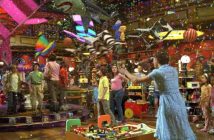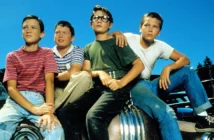Cinemas in the noughties were packed with musical adaptations. From Mamma Mia! and Chicago to Sweeney Todd and Hairspray, many well-loved musicals were appearing on the silver screen. I think that, overall, this was a great addition to theatre, but one that could never replace it. It allowed a wider audience to see great writing and music, offered a different perspective on well-loved musicals, introduced new theatre to new people and set a precedent for an important development that was especially useful (for theatre and film) during the COVID-19 pandemic.
Partially, I think musicals in the noughties took off as they allowed a wider audience to enjoy musicals despite rising ticket prices for theatre (though this was not such a big factor until the mid-2010s) and the 2007-2009 recession. People who could not afford to go to the theatre could still enjoy well-loved and lesser-known musicals at cheaper prices. This most likely led to people wanting to see the shows after seeing the films.

Relativity Media
Also, these adaptations meant that you could relive your favourite musicals from the comfort of your living room. Soundtracks are great, but films mean you can watch the action as well as hearing the songs. Whether it’s a show you saw at the theatre and loved or a tour that ended before you ever got to see it, you can find comfort musicals to rewatch for (pretty much) free. In a culture where rewatching comfort shows is commonplace, this is great for musical theatre fans. Similarly, it’s much easier to spontaneously watch a musical film than to go to the theatre.
As well as this, these films offered a different perspective. Theatre sets are wonderful in how they really transport you to a high school or a Greek island, but seeing the performances in situ alters the experience. Whether it’s a barber’s shop in Sweeney Todd or a TV studio in Hairspray, a film can show a different perspective that a theatre production cannot. Similarly, you can achieve different effects in films than in theatre, such as murder scenes in Sweeney Todd and fire effects in various productions. This department gives films the edge over theatre.
![Sweeney Todd: The Demon Barber of Fleet Street – [FILMGRAB]](https://film-grab.com/wp-content/uploads/photo-gallery/imported_from_media_libray/thumb/sweeneytodd45.jpg?bwg=1547053679)
DreamWorks Pictures
That being said, there are big downfalls to stage to screen adaptations. Though it can attract attention to new or touring musicals, it can also discourage people from seeing them live. Cinema or streaming prices are often cheaper than theatre tickets. This can be dangerous for an industry currently struggling post-pandemic. These adaptations can also go wildly wrong. All I’ll say is Cats. Overall, I think that adaptations sparked by the noughties craze created wider audiences for musicals, allowed audiences to relive their favourite musicals and have helped to boost struggling industries after the recent pandemic. I just hope that they don’t distract from live theatre!



